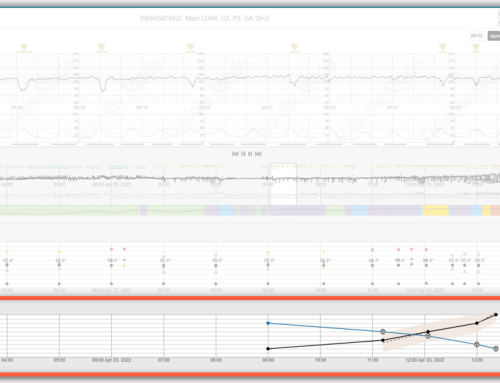Emily F. Hamilton, Philip Warrick, G. Eric Knox, Daniel O’Keeffe, Thomas J. Garite
Objective: To determine if the incidence of high contraction (HC) rates and associated decelerations were different in term births with metabolic acidemia (MA) compared to those with normal gases (N) over the last 4 h of labor.
Methods: MA included 316 babies with cord base deficits (BD) over 12 mmol/L N – 3,320 babies with BD under 8 mmol/L. HC rates were defined as >5/10 min.
Results: One or more episodes of HC occurred in 43.7% of MA and 36.6% of N. (p = 0.015) In both groups the HC rates rose from about 1 in 30 patients at the beginning to 1 in 7 to 9 patients at the end. MA showed a different transition of the deceleration response over time. At the beginning the average ratio of decelerations to uterine contractions was similar in both groups but over the final 140 min MA showed a consistently higher ratio.
Conclusions: Although HC rates were more frequent in the MA, it was not uncommon in N. On average MA showed more decelerations at every level of contractions and had a persistently higher level of decelerations per contraction for more than 2 h before birth.
Cite this article as: Hamilton E, Warrick P, Knox E, Keeffe,DO, and Garite T. High uterine contraction rates in births with normal and abnormal umbilical artery gases. J Maternal Fetal Neonatal Med. 2012 Jun 13.






